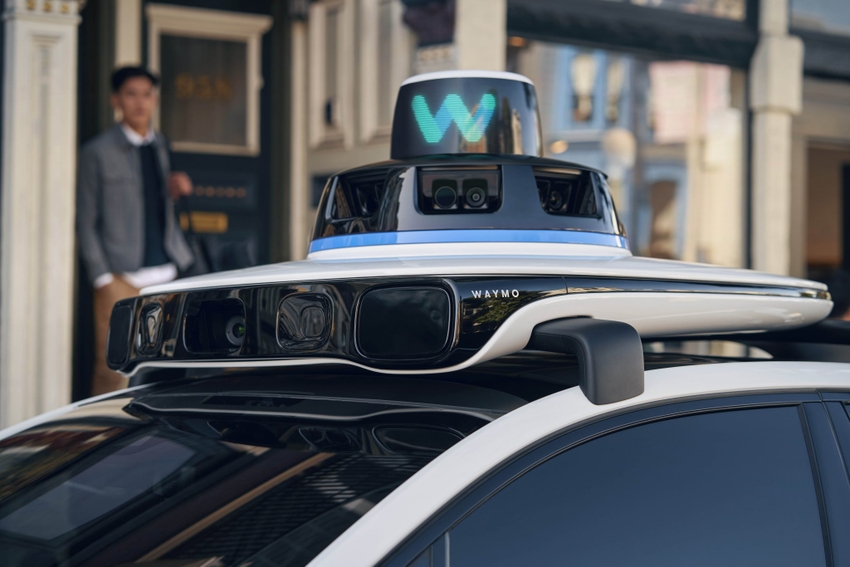The dawn of autonomous, electric robotaxis has arrived, and Waymo is at the forefront of this seismic shift. By expanding its robotaxi service into multiple metropolitan areas, Waymo is redefining urban mobility, reducing congestion, and setting new standards for safety and convenience. This article provides an in-depth exploration of Waymo’s city rollouts, the underlying technology, regulatory challenges, partnerships, user experience, monetization strategies, and future trajectory. Whether you’re a commuter, city planner, investor, or tech enthusiast, understanding Waymo’s expansion offers valuable insights into how autonomous mobility-as-a-service (MaaS) will transform transportation.
A. Historical Context and Company Overview
To appreciate Waymo’s current city expansions, it’s crucial to understand the company’s evolution and the broader autonomous vehicle (AV) landscape.
A. Origins at Google: Founded in 2009 as Google’s self-driving car project, Waymo inherited a decade of machine‑learning research, sensor innovation, and simulation expertise.
B. Spin‑Off Milestone: In 2016, Alphabet rebranded the initiative as Waymo, granting it autonomy to partner with automakers, insurers, and municipalities.
C. Early Pilots: Initial trials occurred in Mountain View, CA, featuring modified Chrysler Pacifica hybrids equipped with LiDAR and custom software.
D. Phoenix Service Launch: By December 2018, Waymo One debuted as the world’s first public robotaxi service in Phoenix’s suburbs, offering fully driver‑less rides on limited roads.
E. Strategic Vision: Waymo’s mission hinges on safety, scalability, and accessibility leveraging data-driven improvements to iterate rapidly and expand responsibly.
B. City Selection Criteria
Not every city qualifies for a robotaxi fleet. Waymo evaluates numerous factors to determine ideal launch locations:
A. Regulatory Climate: Cities must have supportive AV regulations, clear permitting processes, and collaborative local agencies.
B. Road Infrastructure: Well-mapped roads, reliable signage, and consistent lane markings improve sensor accuracy and route planning.
C. Population Density: Urban centers with high commuter volumes ensure vehicle utilization rates that support cost-effective service.
D. Technology Ecosystem: Regions with robust 4G/5G coverage, edge compute availability, and fiber connectivity facilitate real-time data exchange.
E. Public Transit Integration: Cities prioritizing MaaS integration enable seamless transfers between robotaxis, buses, and trains, maximizing ridership.
F. Local Partnerships: Collaboration with transit authorities, utilities, parking operators, and automotive OEMs smooths deployment hurdles.
C. Underlying Technology Stack

Waymo’s success stems from a layered technology framework combining hardware, software, and cloud services.
A. Sensor Suite: High-definition LiDAR arrays, radar units, and cameras deliver 360° situational awareness, functioning reliably in various weather and lighting conditions.
B. Perception Algorithms: Deep‑learning models process sensor inputs to identify vehicles, pedestrians, bicyclists, and road signs with sub‑10ms latency.
C. Mapping & Localization: Pre‑mapped HD road networks, enriched with centimeter‑level fidelity, enable precise vehicle positioning, even on GPS‑challenged streets.
D. Route Planning: Multi‑agent path‑planning systems calculate optimal trajectories, balancing safety, efficiency, and passenger comfort.
E. Edge & Cloud Orchestration: Onboard compute handles real‑time inference, while the cloud aggregates fleet data to retrain models and push OTA software updates.
D. Safety Protocols and Validation
Safety remains Waymo’s top priority. Rigorous testing and continuous validation ensure reliable performance before and after launch.
A. Simulation Environment: Waymo’s virtual testing platform runs trillions of miles of edge‑case scenarios, from erratic pedestrian movements to sudden road closures.
B. Closed‑Course Testing: Before public roads, vehicles navigate private tracks replicating construction zones, tunnels, and roundabouts.
C. Shadow Mode Trials: In live traffic, human‑driven vehicles collect data while Waymo’s software “shadows” decisions, highlighting potential failpoints without endangering passengers.
D. On‑Road Validation: Graduated testing phases driver‑supervised, human‑trained backup, then fully driverless across multiple weather and traffic conditions.
E. Regulatory Audits: Continuous reporting to state and municipal agencies, independent third‑party safety assessments, and transparent incident disclosures build public trust.
E. Strategic Partnerships and Collaborations
Waymo’s ecosystem extends beyond its own engineering prowess, encompassing a network of strategic alliances.
A. Automotive OEMs: Partnerships with Stellantis, Jaguar Land Rover, and Volvo integrate Waymo’s self‑driving stack into production EVs and hybrids.
B. Local Transit Agencies: Collaborations with city transit authorities pilot first-last mile solutions, offering subsidized rides that complement bus and rail networks.
C. Energy & Charging Providers: Agreements with charging network operators ensure vehicle uptime, with dynamic scheduling that optimizes off‑peak electricity rates.
D. Insurance Underwriters: Custom AV insurance products cover public liability, cyber‑risks, and new usage‑based premium models aligned with Waymo One’s trip data.
E. Urban Planning Bodies: Data‑sharing pacts provide anonymized traffic flow insights to municipal planners, aiding congestion mitigation and infrastructure investments.
F. Regulatory Landscape and Compliance
Navigating diverse local and federal regulations requires a proactive, multi‑jurisdictional strategy.
A. Federal Guidelines: Adherence to NHTSA’s voluntary cybersecurity and safety evaluation guidelines, while awaiting cohesive AV legislation.
B. State Permits: State-by-state deployment requires distinct permits that stipulate testing hours, operational boundaries, and reporting frequency.
C. Local Ordinances: Municipalities may impose noise, emissions, and curb‑side pickup/drop‑off regulations impacting service design.
D. ADA Accessibility: Ensuring accessible vehicles and companion features for riders with disabilities, as mandated by the Americans with Disabilities Act.
E. Privacy Regulations: Compliance with CCPA and GDPR for data handling, anonymization, and user consent management.
G. Infrastructure and Operational Logistics
Supporting a robust robotaxi fleet in cities demands a dedicated infrastructure backbone.
A. Charger Depots: Strategically located fast‑charging hubs with multiple plugs, battery‑health monitoring, and predictive maintenance alerts.
B. Maintenance Facilities: Service centers equipped for both hardware repairs and OTA software diagnostics, staffed by certified AV technicians.
C. Vehicle Relocation Systems: Automated rebalancing algorithms direct idle vehicles to high‑demand zones, minimizing wait times and idle mileage.
D. Customer Support Centers: 24/7 remote assistance teams assess live vehicle data, troubleshoot anomalies, and dispatch field technicians when necessary.
E. Data Centers & Edge Nodes: Distributed compute nodes within cities reduce latency for mission‑critical control tasks and maintain GDPR‑compliant data residency.
H. User Experience and App Design

A frictionless rider journey is essential for adoption. Waymo focuses on intuitive design, trust-building, and seamless payments.
A. Mobile App Interface: Simple UX flows allow users to hail a ride, view real‑time ETA, share trip progress, and rate service quality.
B. In‑Vehicle Experience: Clean cabin layouts, adjustable seating, climate control, onboard Wi‑Fi, and personalized infotainment suggestions powered by AI.
C. Pricing Models: Dynamic fares adjust for time of day, distance, and service tier (standard vs. premium), with transparent surge notifications.
D. Accessibility Features: Voice prompts, high-contrast displays, and wheelchair‑friendly boarding support riders with special needs.
E. Safety Reassurances: Pre-ride briefing on safety features, emergency stop buttons, and remote operator intervention options for anxious riders.
I. Monetization and Business Models
Beyond direct ride fares, Waymo leverages diverse revenue streams to drive profitability and scale.
A. Ride Subscription Plans: Monthly passes with discounted per‑ride rates incentivize frequent users and ensure predictable recurring revenue.
B. Ad‑Supported Rides: Optional in‑ride advertising curated audio/video offers riders lower fares in exchange for ad engagement.
C. Data Insights Services: Aggregated traffic and usage analytics sold to retailers, event organizers, and smart city platforms.
D. White‑Label Solutions: Licensing Waymo’s software stack to OEMs for integration into ridepool or delivery fleets under partner brands.
E. Logistics and Delivery: Diversifying into autonomous parcel delivery services, utilizing off‑peak network capacity.
J. Environmental and Social Impact
Robotaxi services, especially when electric, yield significant sustainability benefits and social equity gains.
A. Emissions Reduction: Electric fleets cut tailpipe CO₂ emissions by up to 70% compared to gasoline taxis, accelerating city decarbonization goals.
B. Reduced Congestion: Intelligent routing and shared trips decrease overall vehicle miles traveled (VMT), easing traffic bottlenecks.
C. Accessibility Gains: On‑demand mobility in underserved neighborhoods improves access to jobs, education, and healthcare.
D. Ridepooling Efficiency: Multi‑stop shared rides amplify occupancy rates, reducing cost-per-passenger and environmental footprint.
E. Community Engagement: Waymo-sponsored workshops educate residents on AV safety, data privacy, and career opportunities in the mobility sector.
K. Challenges and Mitigation Strategies
Despite rapid progress, autonomous robotaxi deployments face technical, social, and economic hurdles.
A. Edge‑Case Handling: Rare scenarios cyclists cutting between cars, makeshift construction detours require continual algorithm refinement through fleet‑wide data capture.
B. Public Perception: High‑profile incidents, even minor, can erode consumer trust; transparent communication and third‑party audits help restore confidence.
C. Cost of Operations: Sensor hardware, specialized compute, and licensed mapping data elevate per‑vehicle costs; economies of scale and component commoditization promise reductions.
D. Competitive Landscape: Emerging AV players, ridehail incumbents, and mobility startups intensify pressure; strategic differentiation through service quality and safety is critical.
E. Infrastructure Gaps: In regions with inconsistent road signage or limited connectivity, Waymo partners with local governments to jointly invest in upgrades.
L. Current and Upcoming City Launches

As of Q2 2025, Waymo One operates in multiple U.S. regions and is preparing international pilots:
A. Phoenix Metro, AZ: Full driverless launches in downtown Phoenix, Tempe, and Mesa, servicing over 10,000 monthly riders.
B. San Francisco, CA: Limited‑area operations covering SoMa, Mission Bay, and the Financial District, with safety drivers supervising off-peak hours.
C. Los Angeles, CA: Golden Triangle pilot, focusing on LAX airport shuttles and West Hollywood nightlife corridors.
D. Miami‑Dade, FL (Upcoming): Scheduled for fall 2025, targeting Brickell and Wynwood art districts with bilingual support.
E. Tokyo, Japan (Upcoming): International expansion in 2026, in partnership with local automaker and transit authority, covering Odaiba and central wards.
M. Future Outlook and Innovations
Looking several years ahead, Waymo’s roadmap includes:
A. Level 5 Autonomy: Full off-road and all-weather capability without geofencing constraints.
B. Vehicle-to-Everything (V2X) Integration: Communication with traffic lights, road signs, and pedestrian devices for predictive traffic flow.
C. Swarm Intelligence: Fleets coordinating like “swarms,” dynamically reallocating vehicles in real time to balance demand and minimize idle time.
D. Passenger Personalization: AI agents anticipating destination contexts calendar invites, meeting locations and proactively positioning vehicles.
E. Cross‑Modal Platforms: Integrated MaaS apps combining robotaxis, e‑scooters, micromobility, and public transit into a single payment and routing interface.
Conclusion
Waymo’s expansion of robotaxis into urban centers signifies a pivotal moment in mobility history. By blending state‑of‑the‑art AI, rigorous safety validation, strategic partnerships, and user‑centric design, Waymo is setting benchmarks for autonomous MaaS. As more cities open their streets, robotaxis will not only reshape how people move but also foster cleaner environments, smarter infrastructure, and more inclusive access to transportation. Staying informed about these developments is crucial for stakeholders across industries from municipal planners and investors to everyday commuters who stand to benefit from the autonomous revolution.











